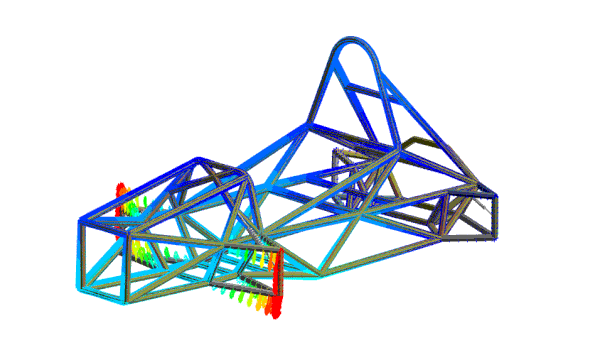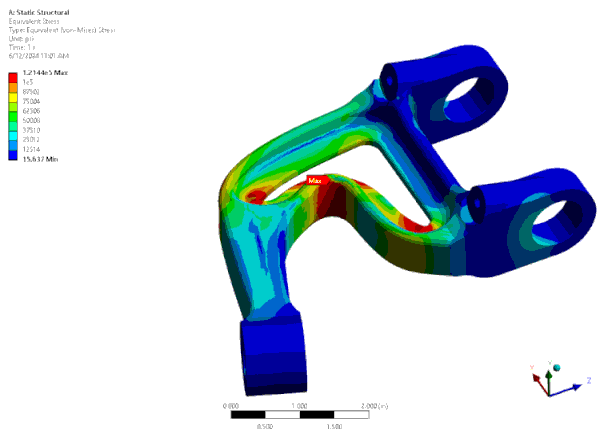Static Structural Analysis
Static structural analyses predict the distribution of deflection, strain, and stress within a component or assembly, providing critical insights into its structural behavior.
Static structural analyses predict the distribution of deflection, strain, and stress within a component or assembly, providing critical insights into its structural behavior.
Static structural analysis is a type of finite element analysis (FEA) used to predict the behavior of structures without considering time-dependent effects (like damping, inertia or resonance). Static structural analyses can be quite complex and may include nonlinearities such as changing status contact, large deflection/large strain effects and material nonlinearities (i.e., plasticity and hyperelasticity).
These simulations predict the deformations, stress, and strains experienced by the structure. The results allow engineers to predict the performance of components in real-world conditions as well as optimize their designs and prevent failures in the field.

Static structural analyses can also be coupled with other physics. These include thermal/structural, fluid-structure interaction (FSI), electromagnetic/structural, acoustic/structural, structural/optics, and piezo-electric. Optimization methods including parametric, topology, shape, and topography are available with static structural simulations. These advanced coupling capabilities provide engineers with deeper insights into structural behavior under complex, real-world conditions.

The engineers at SimuTech Group routinely assist clients to understand, manage, and potentially redesign products using static structural simulations and analysis. In many applications, the information and insight gained through simulations is invaluable and would be very difficult to replicate with physical testing.
Static structural analysis can help to answer the following questions for bolted assemblies:
Static structural analysis can help to answer the following questions for designs with rubber seals:
Static structural analysis can help to answer the following questions for designs with snap or interference fits:
Static structural analysis can help to answer the following questions for structural parts:
Static structural analysis can help to answer the following questions for assemblies utilizing gears:
Static structural analysis can help to answer the following questions for PCB design:
Static structural analysis can help to answer the following questions for automotive chassis design:
Our team of experienced engineers can assist you at any step of your process.